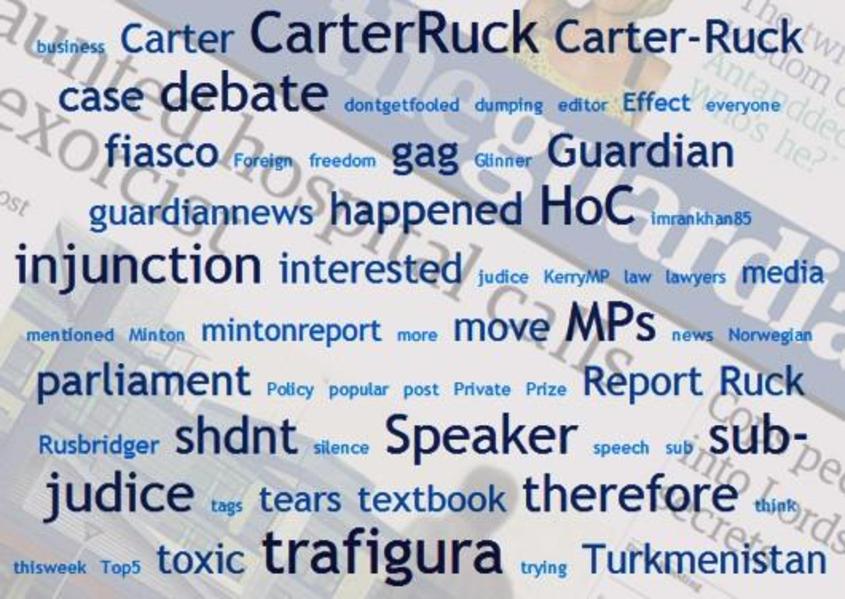From Old Media to News Media close

So it has finally happened… The non-tech world has realised that the way we consume news has changed irrevocably. Well maybe the Wider World is a bit of an overstatement, but just ask the Grey Suits at Carter Ruck and they will confirm what the cool kids have known for a while; Old Media is not dead but it simply cannot compete with the immediacy and the omnipotence of a million tweets when it comes to reporting events in real time.
There was a time, not too long ago, where carrying a late edition of The Standard put you at the bleeding edge of the day’s news. Then came the evolution of mainstream media onto the web. Some (The Guardian & The Economist for example) achieved this better than others, but ultimately a lunchtime fix of the headlines moved from the Café to the desktop. As immediacy goes this was a big step forward. Allied with newsgroups and rss feeds bringing updates straight to you, with minimum effort and no cost, the thirst for immediate news was quenched if not sated.
But we were still reliant on our chosen news providers or a limited number of bloggers to actually report on the news in a timely fashion. We were also restricted to one or, at best, a few opinions and viewpoints. Political leanings and personal agenda were present in the same way they had traditionally been with news agencies. There were also considerations such as time difference and legal restrictions that meant we weren’t receiving news on our own terms.
Then came Twitter.
That evening Alan Rusbridger, the Guardian’s Editor-in-Chief, fired out a single tweet linking to the piece. He had in the region of 500 ‘followers’ – a pittance in Twitter currency. By the time he returned from dinner, the Twitterverse had gone into overdrive. By the following morning #carterruck, #trafigura, the company that turned out to be at the centre of the controversy, and the #guardian were all top trending topics. The majority of Tweeters were simply outraged at the attempted blockade of an ancient journalistic right, others had taken it upon themselves to sniff out the truth and publish it, free from the binds of legal injunction. Twitter heroes such as Stephen Fry added their considerable voices to the cause (c. 850k followers) and by lunchtime on the Tuesday, an hour before the Guardian were due in court to contest the gagging order, Carter Ruck had rescinded the injunction due, almost entirely, to the weight of public opinion coming straight out of the Twitter.
What the Guardian did was crowd source the freeing of information that would otherwise have taken them days in a courtroom and enormous amounts of money to release. And it happened in the space of a few hours.
It is for this very reason that today, if something captures my interest, my first port of call is a Twitter search. I know that on there will be countless others interested and talking about the same thing right then, at the very moment that I want to discover more. This is fundamentally changing how people consume news. Anyone with access to the internet can now legitimately broadcast information, free from the restrictions that bind traditional media in the form of legal tethering and time (time difference, editorial lag etc) and countless others can consume it and make up their own minds as to it’s legitimacy in the context of the general noise around the same topic.